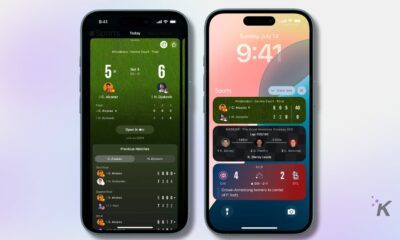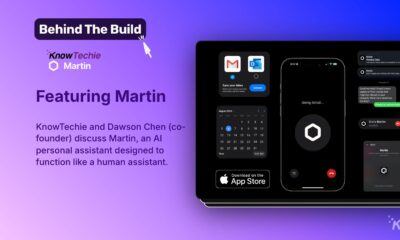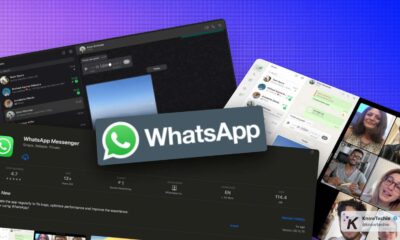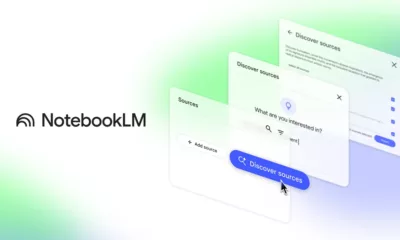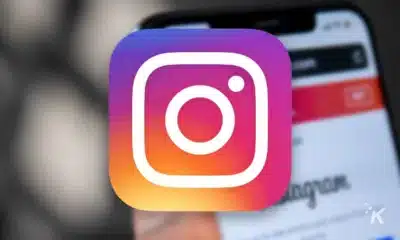Apps
Choosing a technology stack for social network app development

Just a heads up, if you buy something through our links, we may get a small share of the sale. It’s one of the ways we keep the lights on here. Click here for more.
Social networks are still trending, and many developers wonder how to make a social media app. At the same time, it is now becoming harder to compete with giants like Facebook, Twitter or LinkedIn. Regardless, social network app development is still interesting for startups, individual developers and businesses, as the audience is getting wider and greater every day – and there are statistics proving this point.
The trend is obvious: every year, new users of different ages, backgrounds and interests are joining those who use social media on a daily basis. And these numbers are only going to rise, according to a Statista’s forecast. In addition, not only more people started using social media, they also began to spend more time on their phones daily.
So, what is so special about social media apps? The first thing is of course the unique set of functions that these apps offer. Different social media applications may have different functionalities but, still, there are always some must-have features, such as profiles, communication tools, notifications, and more.
All these features are enough for an MVP, and especially if it is necessary for you to check whether your idea works before you invest more time and money in it. The biggest question you have to answer before finding a proper way to build a social media app is this: is the core idea a “killer feature”?
Another difference between social media apps and any others lies in the peculiarities of its architecture. Two main parts that make up an app are the backend and frontend. The backend is a server part of an app and it is responsible for database and API. Also, it includes an admin panel. So, choosing a social network app technology stack for each of these parts is important.
Frontend
There is no actual formula for a social media app technology stack that provides 100% success. Only a professional architect, who has lots of years of experience, can tell with certainty which technologies will best suit your ideas; however, it is also hard to be completely wrong when it comes to how to choose your tech stack. First and foremost, a developer has to ask him or herself:
1) Which framework will allow for faster app development?
What this question actually means is “which framework do I know the best”. It is always a good idea to build an application based on what a developer knows well and has experience in because learning new frameworks can take up lots of time, and there’s no guarantee it will eventually pay off.
2) Which framework is the most flexible?
Flexibility is necessary because some things will definitely change as the project evolves and modifications may be required as you get feedback from your users. Some ideas may be cut off and others may appear, so it is good for a framework to be flexible and accept those changes without the need to completely redo the whole application.
3) Which framework offers the best performance?
Each technology has its purpose. Some of them provide fast data processing, and others are needed when there is lots of information to handle. Ask yourself about the goals of your application and decide which framework suits you best.
If you are focused on a mobile frontend, Ionic framework is a great option for visuals, which is easy to use, and easily supported. If you are building a web frontend, you may use Angular.js and Bootstrap; however, it may become a bit hard to scale Angular projects. If you plan to scale,Vue is a reactive framework that allows for a higher level of scalability. VueJS development will also come as easier to learn.
You may want to use React, as well, because it is more popular. Pairing it with Redux can give you the ability to cover pretty much all the needs on the frontend. It is also more manageable and scales really well. Budget plays an important role when you choose a frontend tech stack. If you have the resources, we suggest you build native applications using native languages. For Android, that would include Java or Kotlin, and for iOS – Objective C or Swift.
Backend
For the backend, Node.js is one of the most used tools, mostly focused on real-time events. It is perfect for social networks that are usually very dynamic – chats, instant messages, likes or comments – and require quick data processing. It can be used in combination with Ember.js, for scalability.
You can also use Socket.io in combination with Node.js to create an extremely fast chat service with minimal latency. Also, you can choose some PHP-based frameworks, as they allow to build an app with higher speed. One of the examples is Symphony2, one of the most popular PHP-frameworks in the world.
Database
How do you want your app to perform? Does it have to process lots of data? Maybe, your app is very dynamic, so data exchange speed is your main priority? There are lots of databases, so you won’t suffer from lack of choice.
Most social media apps use JSON format, and databases can vary. You can choose any database: SQLite, MySQL, PostgreSQL, or NoSQL database – like Mongo DB, for example.
Mongo DB is suitable if you have a large amount of data, as it is capable of storing and processing lots of information, but it is not the best choice for a social media app, because it is rather slow. You can fix that by pairing it with Cassandra, which will provide higher timeline speed. For cloud services, you can use Amazon Web Services as a storage for all your data.
Admin Panel
In general, there are two options concerning the admin panel: either you build it on your own or with the help of a development company, or you use a third-party service. Both of these approaches have their pros and cons, which is why you need to choose your strategy based on your needs and wishes.
Many companies and startups prefer not to build their admin panels from scratch, because it may be rather costly (on average it takes 120 hours of development time). In the case of using Service, you will only need a bit of time to integrate with the Backend.
So, what are the pros of Backend as a Service solution? Little development time, 24/7 support, and additional services. On the cons side, though, you have little possibility for customization, low scalability, poor analytics, expensive, and dependence on their servers and prices.
Using third-party services for MVPs may be a good idea because it is much cheaper and convenient; however, if you are sure of your product’s success, or there are some functions that you can’t get from a provider, you can save some development time by building your admin panel with PHP.
















